PicPort®-Color
framegrabbers provide digitization of color PAL or NTSC video signal. The
digitized studio qsuality image is further conditioned in real time and
transfered directly to display and/or memeory. PicPort®-Color
framegrabbers provide an inexpensive solution successfully used in many
different applications and dedicated systems.
PicPort®-Color is a framegrabber:
- for standard color cameras
- studio quality images
- downscaling, mirroring
- color space conversion
- text & graphic overlay
- PCI, CompactPCI, PMC module
- application specific systems
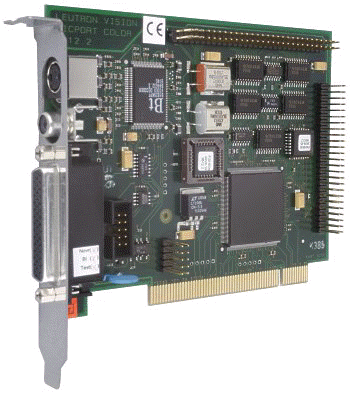
All the PicPort® models are based on similar architecture.
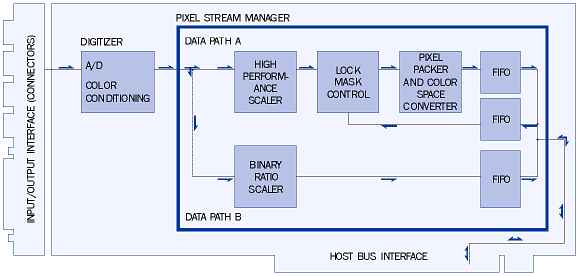
°@
The PicPort® I/O interface generally comprises video input connectors, synchronization and opto-isolated trigger inputs and outputs. PicPort®-Color can handle 4 CVBS or 3 CVBS and 1 S-video connected sources, one being digitized at a time. Switching among sources is performed via software.
The board contains a female cinch composite video connector, a female S-video connector and a female HDsub44-pin connector. The HDsub44-pin connector handles up to 4 video inputs and includes camera power supply output, TTL level H/V sync output, one opto-coupler in and one opto-coupler out to synchronize user application software with external events. With this multi-feature connector, the user application may be operated using just a single cable.
PicPort®-Color PMC modules are equipped with the 44-pin connector only, however 8 opto-coupler inputs and outputs are available.
To match all different requirements of all vision applications developed for industrial environment, the PicPort® framegrabbers are available in standard PCI bus, CompactPCI model and PMC module versions based on PCI bus revision 2.1. All three models are fully compatible in their features, the only difference is in connector interface.
PicPort®-Color cards feature a high quality digitizer channel and additional circuits for image conditioning.
The Pixel Stream Manager is the real heart of every PicPort®. It consists of two data paths (DMA channels) with different features (see the figure). Data path A features the following circuits: High Performance Scaler for fine interpolating, detail-preserving, image scaling down to approx. 40°—40 pixels with horizontal plus vertical mirroring, Lock Mask Control for text or graphics overlay on the top of the live image and Pixel Packer and Color Space Converter to perform conversion to a desired color format.
The second data path B contains only the Binary Ratio Scaler.
Both data paths contain FIFO buffers for proper synchronizing the DMA transfers.
All boards utilize an on-board controller to guarantee performance of real time critical tasks independent of host processor or operating system.
Each PicPort® board contains a firmware EEPROM that is updated automatically by driver software ensuring compatibility between hardware and software releases. In addition two bytes of the EEPROM are available to OEM's for use as a Software Dongle.
PicPort®-Color framegrabbers accept video sources compliant with PAL/CCIR or NTSC/RS170 video standards, as composite CVBS or S-video signal format. Pixel shape in accordance with CCIR601 or square format is possible.
Non-standard cameras can be configured with an easy to use Camera Editor by just selecting one of the many predefined cameras, modifying the parameters and saving for future use.
The input image first reaches the Image Digitizer, which consists of two major parts. The first one, an A/D convertor, assures real time conversion of input analog video image to digital YUV image data at sampling rate of up to 20 MHz. The resulting video data stream is of the best studio quality.
In the second part of the Digitizer, you can adjust further digitization parameters via software. Brightness, contrast, hue and saturation of a color image are freely programmable within generous limits.
Image scaling and mirroring are operations performed by the Pixel Stream Manager with a range of functionality dependent on the data path (DMA channel) used. DMA channel A with its High Performance Scaler uses a mathematical interpolation method independently along both x and y axes, resulting in an image free from any significant loss of detail.
Alternatively, when the simpler DMA channel B is used, only vertical mirroring and binary downscaling is available.
By means of a Lock Mask feature, unique to PicPort®, image data flowing through DMA channel A can be overlaid by a 1-bit mask created as a compressed bitmap within Windows in the form of text or graphics.
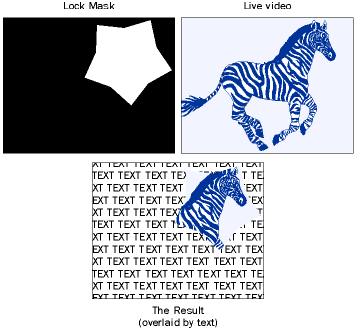
By utilizing the Pixel Packer and Color Space Converter the data on DMA channel A can be converted to monochrome, RGB or YUV with predefined color and bit depths.
| Original format | Target format | Bit use |
| YUV 4:2:2, CCIR656 | Y8, packed | 8-bit luminance |
| YUV 4:2:2, CCIR656 | Y2, packed | 2-bit luminance |
| YUV 4:2:2, CCIR656 | Y1, packed | 1-bit luminance |
| YUV 4:2:2, CCIR656 | £\RGB, 32-bit | 8-8-8-8 |
| YUV 4:2:2, CCIR656 | RGB, 24-bit packed | 8-8-8 |
| YUV 4:2:2, CCIR656 | RGB, 16-bit | 5-6-5 |
| YUV 4:2:2, CCIR656 | £\RGB, 15-bit | 1-5-5-5 |
| YUV 4:2:2, CCIR656 | RG£\B, 15-bit | 5-5-1-5 |
| YUV 4:2:2, CCIR656 | RGB, 8-bit | 3-3-2 |
| YUV 4:2:2, CCIR656 | YUV 4:4:4, 24-bit packed | 8-8-8 |
| YUV 4:2:2, CCIR656 | YUV 4:2:2, 16-bit packed | Y1V0Y0U0, 8 bits each |
| YUV 4:2:2, CCIR656 | YUV 4:2:2, 8-bit packed | Y1V0Y0U0, Y 8 bit, U, V 4 bits each |
| YUV 4:2:2, CCIR656 | YUV 4:1:1, 16-bit | °@ |
| YUV 4:2:2, CCIR656 | YUV 4:2:0, MPEG | °@ |
| YUV 4:2:2, CCIR656 | YUV-9, Indeo | °@ |
The digitized and conditioned data is transferred using two independent DMA channels directly to the CPU and/or video memory without on board intermediate storage and with minimal CPU intervention. The board acts as a PCI bus master allowing transfers at peak rates of up to 132 MB/s i.e. real time transfer for all acquisition modes.
The two independent DMA channels provide many modes of operation including simultaneous transfer of image data from a single image source to main memory for processing and to video memory for display.
With an unparalleled price/performance ratio the PicPort®-Color framegrabbers are well suited for wide range of applications from many different areas including:
- industrial image processing
- vision systems
- security industry
- documentation
- medical applications
- surveillance
- automation technology
- image data bases
- research and development
-
and many
more
Utilizing the multimedia drivers
available for PicPort®-Color, the framegrabbers can be
immediately used with the TWAIN driver to capture images to common office
applications (MS Office, CorelDRAW, etc.) as easy as you would do with a
scanner. The Video for Windows driver allows recording of video sequences in
popular multimedia programs and to save them in the AVI format for example. The PicPort®-Color
boards are also successfully used in application systems, two of which are
described in detail below.
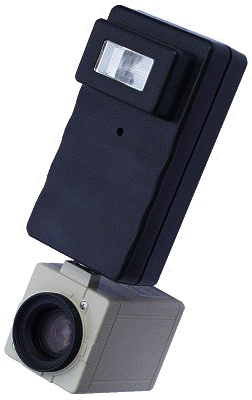
The set comprises of the LV-2000 color camera, Tru-Flash device, cable and software.
LV-2000 is a color camera (in both PAL and NTSC versions) providing wide range of features including S-video or composite output, auto focus, auto iris, 16°— optical power zoom, 128°— digital zoom, electronic shutter, white balance, AGC, sharpening etc. All the camera functions may be operated either in automatic or in manual mode and are fully controlled by means of software via the RS-232C interface.
Tru-Flash is an extremely sophisticated flash device fully synchronized with the camera output signal to flash twice, once for each field in the interlaced image frame.
The set comes complete with an all-purpose cable connecting the flash with the camera and a PicPort®-Color framegrabber.
The system can be easily
incorporated into other applications simply by including all or part of the
sample source code provided to assist the programmer.
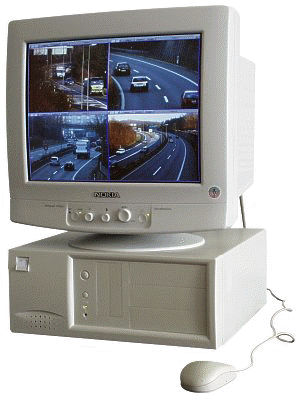
QuadriScreen is a digital video monitoring system offering a flicker-free, non-interlaced display of four or more video sources on a single high-resolution monitor with unequaled high image quality.
The default configuration consists of a standard PC computer equipped with four PicPort®-Color boards. All the PC components are selected carefully to optimize the price/performance ratio of the system.
The QuadriScreen application is supplied pre-installed on the PC and is ready to run.
QuadriScreen may be used with any video camera accepted by the PicPort®-Color boards. It can be also used with an arbitrary PC monitor, however a 1600°—1200 resolution is recommended. The combination of full size, full speed, non-interlaced display with a high monitor refresh rate assures an ergonomic and non-tiring operation.
The most important features of the QuadriScreen system are:
- our live video color images in full resolution and full frame rate on a single monitor- independent freezing/unfreezing the images
- independent brightness, contrast, hue, and saturation adjustment
- simple one-click operation to save the image
- easy usage, most operations require just a single click
- robust application design
- other configurations are available on request for quantity OEMs (e.g. more than 4 cameras, movement detection,
text and graphic insertion etc.)
QuadriScreen has been successfully installed in
- police stations
- underground stations
- hospitals
- traffic control systems
- other surveillance/security systems (bank, prison, large buildings, highways, tunnels, airport, etc.)
Leutron Vision Software Development Suite, LV-SDS, is a software development package (Windows, Linux) that allows full control of all PicPort® products. The suite consists of Daisy - the basic software interface for PicPort® cards, Camera Editor - easy interactive setup of standard and non-standard cameras, DRAL - a library for handling specific time-critical tasks, DirectCapture - higher level library for the simple design of live-video Windows applications, TWAIN Driver and Video for Windows - provide a simple interface between Leutron Vision hardware and other office and image manipulation programs (e.g. MS Office, CorelDRAW, etc.). Further multimedia drivers, like MCI, are available on request.
Language and hardware independent library containing several groups of powerful image processing functions. It is a robust tool for programming vision and measurement applications in industry, research and scientific areas.
Several well-known third party packages for real-time image processing and analysis are also supported. Please refer to our detailed software brochure for more details.
The software products come complete with a set of demo programs and additional examples with source code as a guide to the programmer in developing particular applications.
Bellow we outline a short description of the connector interface of PicPort®-Color boards. Please check full pin wiring schemes description of all the multiconnectors if necessary.
PicPort®-Color (version 9512.2 and higher)
The board can handle 4 CVBS or 3 CVBS and 1 S-video connected sources, one of which is being digitized at a time. Switching among sources is performed via software.
The board possesses a female cinch composite video connector, a female S-video connector and a female HDsub 44-pin connector (4 video inputs, camera power supply output, TTL level H/V sync output, 1 optocoupler in and 1 optocoupler out to synchronize user application software with external events, COM1 or COM2 flow through, I2C bus signal, RS232 signal inputs). Thanks to this multifeature 44-pin connector, the user application may be operated using just a single cable.
PicPort®-Color (version 9512.1)
This older version of PicPort®-Color was equipped with different connector interface. For more information, please check the PicPort® Series, Getting started.
Different versions of PicPort®-Color boards are provided with different connector interfaces (as described in previous sub-chapter). The pin wiring schemes of all the connectors are described below.
Note: You can identify the version number of your PicPort®-Color from label sticked on the back side of the board.
PicPort®-Color for standard PCI bus, version 9512.2 and higher
Pin description table for the 44-pin custom camera connector:
| Pin | Signal |
| 14 | CVBS1 Video Input,
Signal shared with cinch connector 1) |
| 30 | CVBS2 Video Input, Signal |
| 15 | Reserved (9512.2,
9513.3) CVBS3 (9512.4 and higher) |
| 13 | Analog Ground |
| 29 | S-Video Input,
Y-Signal; shared with S-video connector |
| 44 | S-Video Input,
C-Signal; shared with S-video connector |
| 43 | Analog Ground |
| 28 | PMD-Red Video output, Signal, 1 Vpp |
| 12 | PMD-Green Video output, Signal, 1 Vpp |
| 27 | PMD-Blue Video output, Signal, 1 Vpp |
| 42 | PMD-CVBS Video Output, Signal, 1 Vpp |
| 11 | PMD-Hsync Output |
| 41 | PMD-Vsync Output |
| 26 | PMD-Analog Ground |
| 23 | RS232_C1 |
| 7 | RS232_C2 |
| 37 | RS232_C3 |
| 22 | RS232_C4 |
| 6 | RS232_C5 |
| 36 | RS232_C6 |
| 21 | RS232_C7 |
| 5 | RS232_C8 |
| 35 | RS232_C9 |
| 20 | RS232_C10 |
| 40 | GND |
| 8 | Connector-Identification, connect this pin to GND inside your cable-connector |
| 9 | Hsync Output (Active Low) |
| 25 | Vsync Output (Active Low) |
| 24 | Reserved (Internally Connected) |
| 39 | Reserved (Internally Connected) |
| 4 | I2C - SDA (on request for quantity OEMs) |
| 34 | I2C - SCL (on request for quantity OEMs) |
| 18 | TAP 5 V |
| 3 | TAP 24 V |
| 17 | Optocoupler Output Emitter |
| 2 | Optocoupler Output Collector |
| 32 | Optocoupler Input A1, +24 V Anode |
| 33 | Optocoupler Input A0, +5 V Anode |
| 19 | Optocoupler Input K, Cathode |
| 38 | GND |
| 10 | +5 V PC Power Supply |
| 1 | GND |
| 16, 31 | +12 V , 700 mA
max Camera Power Supply (9512.2-3) 950 mA max (9512.4 and higher) |
| 1)Shared means that the same signal is available on both connectors Only one connector can be used at the time | |
PicPort®-Color for standard PCI bus, version 9512.1
Pin description table for 9-pin custom camera connector:
| Pin | Signal |
| 1 | CVBS Video Input, Signal |
| 6 | CVBS Video Input, Ground |
| 3 | S-Video Input, Y-Signal |
| 2 | S-Video Input, C-Signal |
| 7 | S-Video Input, Ground |
| 4 | Connector-Identification, connect this pin to ground inside your cable-connector |
| 5 | +12V/700mA Output, protected |
| 8 & 9 | Ground |
15-pin connector for PicMod-Display:
| Pin | Signal |
| 1 | Video output, red or chroma, signal, 1 Vpp |
| 6 | Video output, red or chroma, ground |
| 2 | Video output, green or CVBS, signal, 1Vpp |
| 7 | Video output, green or CVBS, ground |
| 3 | Video output, blue or CVBS, signal, 1 Vpp |
| 8 | Video output, blue or CVBS, ground |
| 5 | Video output, Y or CVBS, signal, 1 Vpp |
| 8 | Video output, Y or CVBS, ground |
| 13 | Hsync output, TTL-level |
| 14 | Vsync output, TTL-level |
| 4, 10, 11 | Ground |
| 9, 12, 15 | Reserved |
| Note: This
connector is active only if you have an optional PicMod-Display. Most signal-pins have dual function depending on software settings. In case of S-video is selected, use pns 5/8 as luminance (Y) and pins 1/6 as chrominance. This loop-through connector does not work for PicMod-Display, model 9603.1! |
|
PicPort®-Color for CompactPCI bus
Description of 44-pin custom camera connector:
| Pin | Signal |
| 14 | CVBS1 Video Input,
Signal shared with cinch connector 1) |
| 30 | CVBS2 Video Input, Signal |
| 15 | Reserved (9703.0) CVBS3 (9703.1 and higher) |
| 13 | Analog Ground |
| 29 | S-Video Input,
Y-Signal; shared with S-video connector |
| 44 | S-Video Input,
C-Signal; shared with S-video connector |
| 43 | Analog Ground |
| 28 | PMD-Red Video output, Signal, 1 Vpp |
| 12 | PMD-Green Video output, Signal, 1 Vpp |
| 27 | PMD-Blue Video output, Signal, 1 Vpp |
| 42 | PMD-CVBS Video Output, Signal, 1 Vpp |
| 11 | PMD-Hsync Output |
| 41 | PMD-Vsync Output |
| 26 | PMD-Analog Ground |
| 23 | RS232_C1 |
| 7 | RS232_C2 |
| 37 | RS232_C3 |
| 22 | RS232_C4 |
| 6 | RS232_C5 |
| 36 | RS232_C6 |
| 21 | RS232_C7 |
| 5 | RS232_C8 |
| 35 | RS232_C9 |
| 20 | RS232_C10 |
| 40 | GND |
| 8 | Connector-Identification, connect this pin to GND inside your cable-connector |
| 9 | Hsync Output (Active Low) |
| 25 | Vsync Output (Active Low) |
| 24 | Reserved (Internally Connected) |
| 39 | Reserved (Internally Connected) |
| 4 | I2C - SDA (on request for quantity OEMs) |
| 34 | I2C - SCL (on request for quantity OEMs) |
| 18 | TAP 5 V |
| 3 | TAP 24 V |
| 17 | Optocoupler Output Emitter |
| 2 | Optocoupler Output Collector |
| 32 | Optocoupler Input A1, +24 V Anode |
| 33 | Optocoupler Input A0, +5 V Anode |
| 19 | Optocoupler Input K, Cathode |
| 38 | GND |
| 10 | +5 V PC Power Supply |
| 1 | GND |
| 16, 31 | +12 V , 950 mA max Camera Power Supply |
| 1)Shared means that the same signal is available on both connectors Only one connector can be used at the time | |
PicPort®-Color for IndustrialPCI bus
Description of 44-pin custom camera connector:
| Pin | Signal |
| 14 | CVBS1 Video
Input, Signal shared with cinch connector |
| 30 | CVBS2 Video Input, Signal |
| 15 | Reserved |
| 13 | Analog Ground |
| 29 | S-Video
Input, Y-Signal; shared with S-video connector |
| 44 | S-Video
Input, C-Signal; shared with S-video connector |
| 43 | Analog Ground |
| 28 | PMD-Red Video output, Signal, 1 Vpp |
| 12 | PMD-Green Video output, Signal, 1 Vpp |
| 27 | PMD-Blue Video output, Signal, 1 Vpp |
| 42 | PMD-CVBS Video Output, Signal, 1 Vpp |
| 11 | PMD-Hsync Output |
| 41 | PMD-Vsync Output |
| 26 | PMD-Analog Ground |
| 23 | RS232_C1 |
| 7 | RS232_C2 |
| 37 | RS232_C3 |
| 22 | RS232_C4 |
| 6 | RS232_C5 |
| 36 | RS232_C6 |
| 21 | RS232_C7 |
| 5 | RS232_C8 |
| 35 | RS232_C9 |
| 20 | RS232_C10 |
| 40 | GND |
| 8 | Connector-Identification, connect this pin to GND inside your cable-connector |
| 9 | Hsync Output (Active Low) |
| 25 | Vsync Output (Active Low) |
| 24 | Reserved (Internally Connected) |
| 39 | Reserved (Internally Connected) |
| 4 | I2C - SDA (on request for quantity OEMs) |
| 34 | I2C - SCL (on request for quantity OEMs) |
| 18 | TAP 5 V |
| 3 | TAP 24 V |
| 17 | Optocoupler Output Emitter |
| 2 | Optocoupler Output Collector |
| 32 | Optocoupler Input A1, +24 V Anode |
| 33 | Optocoupler Input A0, +5 V Anode |
| 19 | Optocoupler Input K, Cathode |
| 38 | GND |
| 10 | +5 V PC Power Supply |
| 1 | GND |
| 16, 31 | +12 V , 700 mA max Camera Power Supply |
| 1)Shared means that the same signal is available on both connectors Only one connector can be used at the time | |
| Bus | PCI, CompactPCI, PMC; Revision 2.1 |
| Image inputs | 3 CVBS + 1 S-video or 4 CVBS |
| Input format | PAL or NTSC as CVBS or S-video |
| Image geometry | 2:1
interlaced; PAL: 768°—576 (square pixels), 720°—576 (CCIR601) NTSC: 720°—480 (square pixels), 640°—480 (CCIR601) |
| Pixel geometry | CCIR601, square |
| Digitizers | 1 |
| Data digitization | 20 MHz, 16-bit per channel |
| Image coding | YUV 4:2:2, CCIR656 |
| Input LUT | n/a |
| Brightness | programmable |
| Contrast | programmable |
| Color hue | programmable |
| Color saturation | programmable |
| Gain | auto |
| Offset | auto |
| Downscaling | horizontal 5-tap and vertical 5-tap independently interpolating scaler |
| Mirroring | along x and/or y axes |
| Overlay | freely programmable 1-bit lockmask stored in host memory |
| Color conversion | RGB, YUV or monochrome target models with various color depths and data packing |
| Transfer to host | bus master burst DMA transfer |
| Transfer rate | peak rate up to 132 MB/s, real time for all acquisition modes |
| Synchronization, slave | from CVBS |
| Line locked PLL | Ultra Lock®, not applicable for VCR steady image (pause mode) |
| Plugs for video | cinch, S-video, HDsub 44-pin, all female |
| Trigger in/out | opto-isolated input/ output |
| Camera power out | 12 V, up to 900 mA, protected |
| Power requirements | 5V/750mA (when a camera is powered from the board, the power consumption is increased appropriately) |
| Operating temperature | 0-50 ĘXC |
Comprehensive set of software tools consisting of video capture libraries and image processing libraries for Windows NT4/95/98/2000 and for Linux. Please check especially the following ones:
Leutron Vision offers wide range of industrial CCD cameras. The best suited for work with PicPort®-Color are:
All the necessary cables for connecting a camera to the framegrabber are available.
PentiCAM is an ultra compact, mobile image processing system for industrial and machine vision, based on standard PC technology and Leutron's PicPort® framegrabbers. PentiCam® is available in a variety of different configurations.
| Product | Description |
| PicPort®-Color | PCI bus model |
| PicPort®-Color CPCI | CompactPCI bus model |
| PicPort®-Color PMC | PMC module |
| LV-SDS | Software developer's suite for PicPort® boards |
| PCI°XCPCI adapter | To operate a CompactPCI bus board in a computer with standard PCI bus |
| Cable HD44m/H12f | Camera cable, 3 m, 44-pin HDsub to 2-pin Hirose |